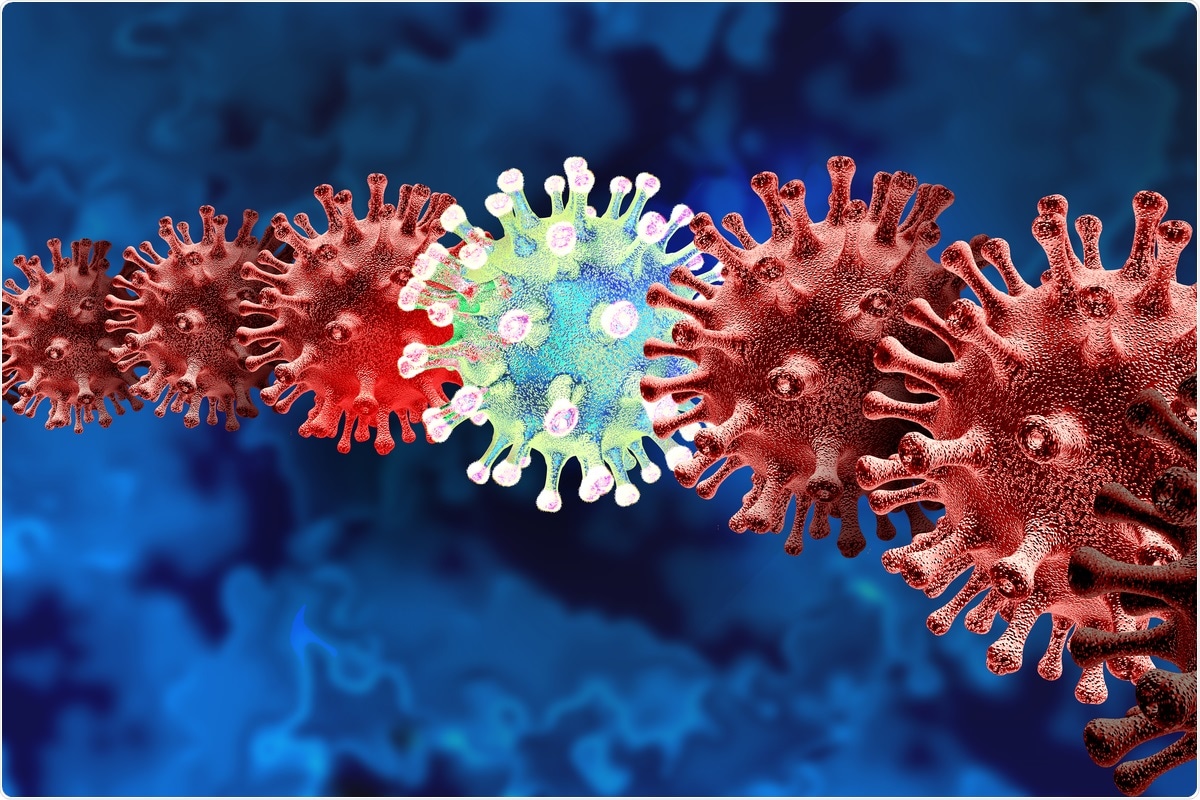 By Sam HancockReviewed by Danielle Ellis, B.Sc.Sep 15 2021
By Sam HancockReviewed by Danielle Ellis, B.Sc.Sep 15 2021Coronavirus disease 2019 (COVID-19) variants have been an ongoing concern since their emergence. The first variant, known as the alpha variant or B1.1.7, was discovered in the UK and quickly became dominant globally. Since then, more variants have been discovered, including beta (B1.351), gamma (P.1), and the current biggest threat, the delta variant (B.1.617.2). The delta variant emerged in India in early 2021 and now accounts for more than 90% of new cases.
 Study: Structure-activity relationships of B.1.617 and other SARS-CoV-2 spike variants. Image Credit: Lightspring/ Shutterstock
Study: Structure-activity relationships of B.1.617 and other SARS-CoV-2 spike variants. Image Credit: Lightspring/ Shutterstock

 *Important notice: bioRxiv publishes preliminary scientific reports that are not peer-reviewed and, therefore, should not be regarded as conclusive, guide clinical practice/health-related behavior, or treated as established information.
*Important notice: bioRxiv publishes preliminary scientific reports that are not peer-reviewed and, therefore, should not be regarded as conclusive, guide clinical practice/health-related behavior, or treated as established information.
New variants are recognized by mutations of the highly glycosylated spike protein. This protein is largely responsible for the pathogenicity of severe acute respiratory syndrome coronavirus 2 (SARS-CoV-2). The receptor-binding domain (RBD) within the N-terminal S1 subunit of the spike protein binds to the angiotensin-converting enzyme 2 (ACE2) receptors presented by human cells, allowing viral entry. The alterations caused by the mutations to this protein can reduce the effectiveness of treatments such as monoclonal antibodies and lower the effectiveness of vaccines. Both Pfizer and Moderna vaccines have shown up to a 12-fold drop in vaccine effectiveness against the beta variant.
To investigate the impact of these mutations, researchers performed cryo-electron microscopy analysis on the variants spike proteins to determine any structural changes. A preprint version of the study is available on the bioRxiv* server while the article undergoes peer review.
The study
The scientists examined the structural effect of the mutations in the beta, gamma, delta, and kappa variants and determined the structures of the 25 spike protein variants. In the beta variant, the RBD showed three states – most were fully open (all RBDs in the up conformation) and two partially open, with one or two RBDs in the up conformation. The structure was also solved without any furin cleavage site substitutions or stabilizing tandem profile to confirm the unusual triple RBD-up conformation.
The gamma spike protein did not show the same fully open state, only the two partially open states (1 RBD-up and 2 RBD-up), but there were two substates for the 1-RBD-up state when the structure was examined three-dimensionally. Delta showed the most variation, including an unusually fully closed conformation in which all RBD’s were in the down conformation. There were also five 1-RBD up substates and three 2-RBD up substates. The most unusual results were seen in the kappa spike protein, with a previously unseen head-to-head dimer, with all three RBD’s in all three spike proteins binding to another RBD from another spike protein. This structure could be resolved into three substates. Two 1 RBD-up substates were seen, and a single 2 RBD-up conformation and the uncommon all RBD down conformation.
It is thought that these altered conformations allow at least the gamma and delta variants to escape immune responses from previous strains, as the chromosomal rearrangements alter the glycan shield around the supersite normally targeted by neutralizing antibodies. Almost all of these structural variants also showed greatly enhanced ACE2 binding, with the kappa variant binding the strongest. When analyzed using cryo-electron microscopy, it was found that the kappa spike protein dimers showed a reduced negative charge, allowing a much stronger electrostatic binding to the negatively charged ACE2. Several other mutations in alternate variants had the same effect, to a lesser extent.
The authors have already identified three effective monoclonal neutralizing antibodies against wild-type SARS-CoV-2, the alpha variant, and D614G, a mutation common to both the delta and kappa strains. These are RBD-chAb -15, -25 and -45. RBD-chAb-15 is not effective against the alpha, beta, or gamma variants protected by the N501Y mutation. Still, a mix of the other two antibodies can neutralize both the alpha variant and variants carrying D614G.
These results help further our understanding of the COVID-19 pandemic. The authors highlight the benefit of knowing the different structural conformations of the variants and the mechanisms by which they escape immunity from common vaccines and monoclonal antibody treatments. The ability of all three discovered neutralizing antibodies to combat the widely spread delta variant is of great importance, as is the versatility of RBD-chAB-45 in recognizing different states of conformation of the RBD, as it binds to the site la/class 2 on the RBD of the spike protein, which is accessible in either up or down conformations.
Other takeaways from this study include the insight into N-terminal mutations in the variants, which in many cases completely avoid the neutralizing ability of N-terminal domain-specific neutralizing antibodies, further highlighting the importance of targeting the RBD.

 *Important notice: bioRxiv publishes preliminary scientific reports that are not peer-reviewed and, therefore, should not be regarded as conclusive, guide clinical practice/health-related behavior, or treated as established information.
*Important notice: bioRxiv publishes preliminary scientific reports that are not peer-reviewed and, therefore, should not be regarded as conclusive, guide clinical practice/health-related behavior, or treated as established information.